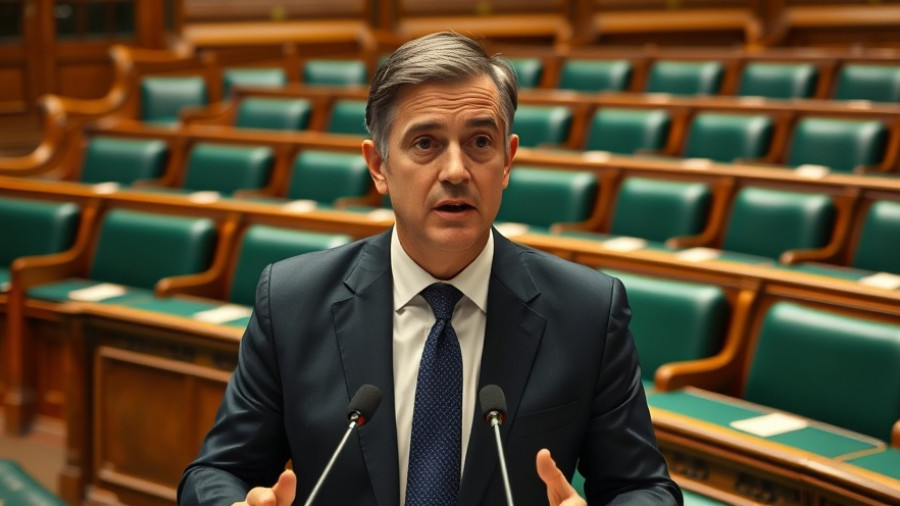
Revitalizing Community Energy Initiatives in North Wales
In the heart of North Wales, an inspiring movement is emerging around community energy and cooperative ownership, driven by the desire for social justice and environmental sustainability. As Dave Darby, co-founder of Lowimpact.org, explores with community leaders Lowri Hedd-Vaughan and Phil McGrath from DEG, there's a unifying vision of harnessing local resources and fostering community spirit.
The Motivation Behind Community Energy
For many in Wales, a history of resource extraction has led to both ecological harm and economic inequity. Lowri Hedd-Vaughan expressed that the community's ambition stems from a strong conviction towards social equity – recognizing past injustices while working towards a more sustainable future. The initiatives designed by groups like DEG, prompted by climate concerns, have been critical in transforming local awareness into actionable climate projects. These include setting up community energy projects and retrofitting efforts aimed at conserving resources and promoting sustainability.
Grassroots Initiatives: A Model for Change
DEG began its journey primarily as a consultancy, empowering community-led ownership of assets. The GwyrddNi project exemplifies this ideology through climate assemblies aimed at building informed local networks. By applying an Asset-Based Community Development (ABCD) approach, GwyrddNi fosters local engagement about energy generation, food sustainability, and the circular economy. Just imagine a neighborhood that not only utilizes renewable energy but also hosts workshops on sustainable cooking or local farming! It's this enthusiastic drive that nurtures solidarity among residents.
Success Stories Shining a Light on Community Ownership
Phil McGrath introduced another remarkable initiative, Cyd Ynni, established by local hydro-electricity schemes in 2016. These community-owned organizations have revitalized their towns by reinvesting hundreds of thousands into their communities. Just picture three hydroelectric schemes pooling resources, harnessing energy from local rivers, and using proceeds to support community projects. It's a beacon of hope showing that local solutions promote local benefits. They've not only created jobs but also nurtured a sense of pride in shared resources.
Decarbonization: A Collective Goal
One noteworthy project tackled the vulnerability of community halls, often the soul of small towns. With community assets at risk, the drive to decarbonize these spaces became urgent. In Pen y Groes, community activists erected solar panels on an old factory’s roof, converting it into a decarbonization hub. This grassroots initiative demonstrates how communities can strategically repurpose underutilized spaces to not only save energy costs but strengthen community bonds as residents unite around a common goal.
Lessons for Young Homeowners in Urban London
So, what can London homeowners learn from North Wales? In a bustling metropolis where sustainability is often overlooked, the community initiatives in North Wales provide a road map for urban residents seeking to embrace sustainable living. Homeowners can collaborate to create similar local energy projects, invest in shared solar initiatives, and even commit to neighborhood improvement projects. Why not start an eco-friendly DIY project together or establish a community garden? Unexpected connections can spark delightful transformations.
Looking Ahead: The Future of Community Energy
With the relentless rise of climate challenges, it's increasingly vital for communities to adapt by spearheading local initiatives. The discussions in North Wales reflect vital trends: community ownership fosters responsibility, education, and sustainability among residents. Imagine a wave of eco-conscious locales, not just in Wales but across the UK, leading the charge towards a more sustainable and just future!
Young homeowners, particularly in London, are at a prime position to influence their communities’ ecological footprint. By integrating innovative ideas with traditional values around community—whether through shared energy resources or neighborhood projects—there's an abundance of opportunities to contribute positively to both local communities and the planet.
Ultimately, these community energy projects reveal that collective efforts anchored in local solidarity can ignite powerful transformations that resonate far beyond individual homes.
Join the Movement!
Feeling inspired? Take action in your community! Start by connecting with local advocacy groups focused on sustainable living or propose your DIY projects that promote eco-friendly practices. Together, we can build vibrant, sustainable communities that promote both well-being and ecological resilience.
 Add Row
Add Row  Add
Add 




Write A Comment